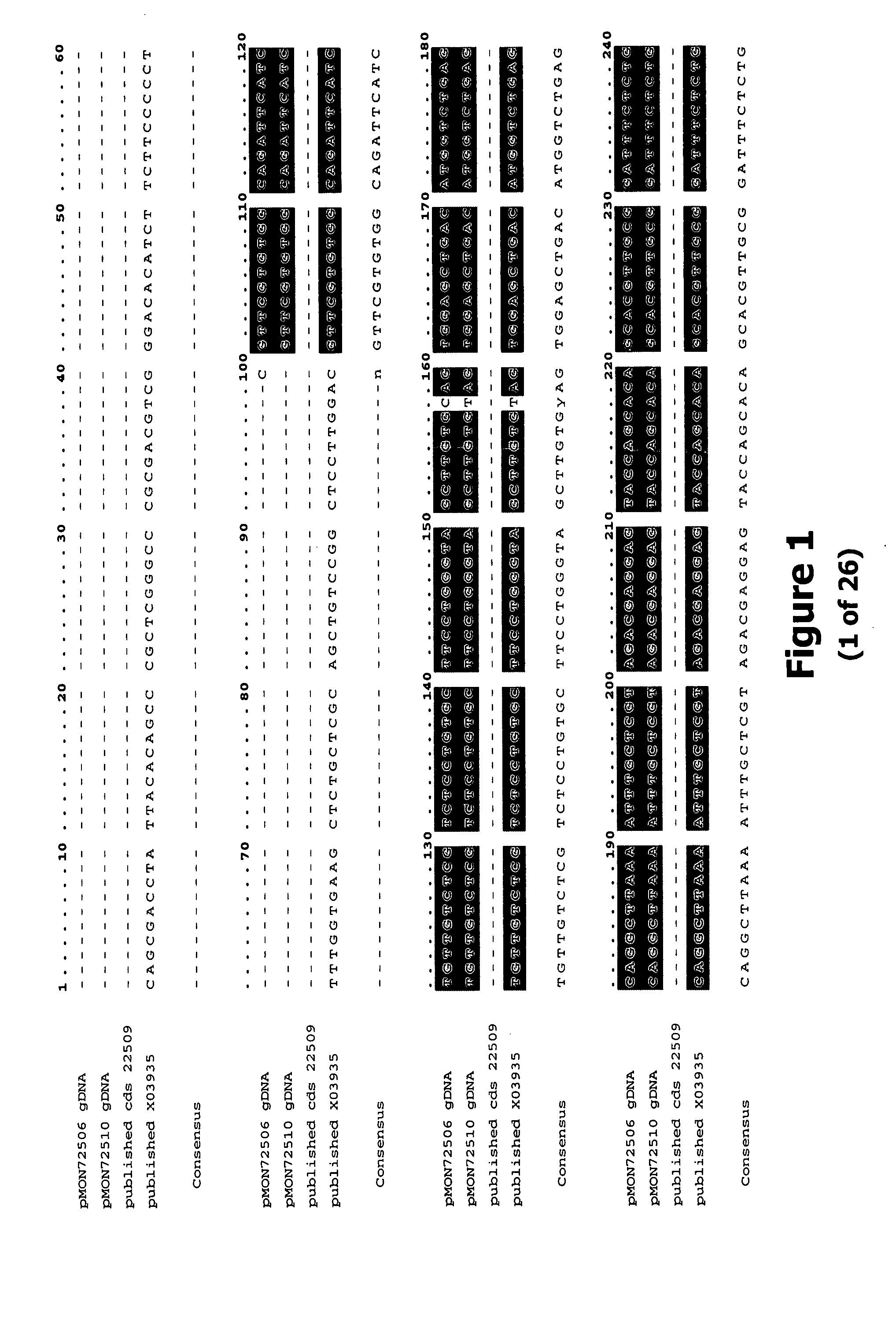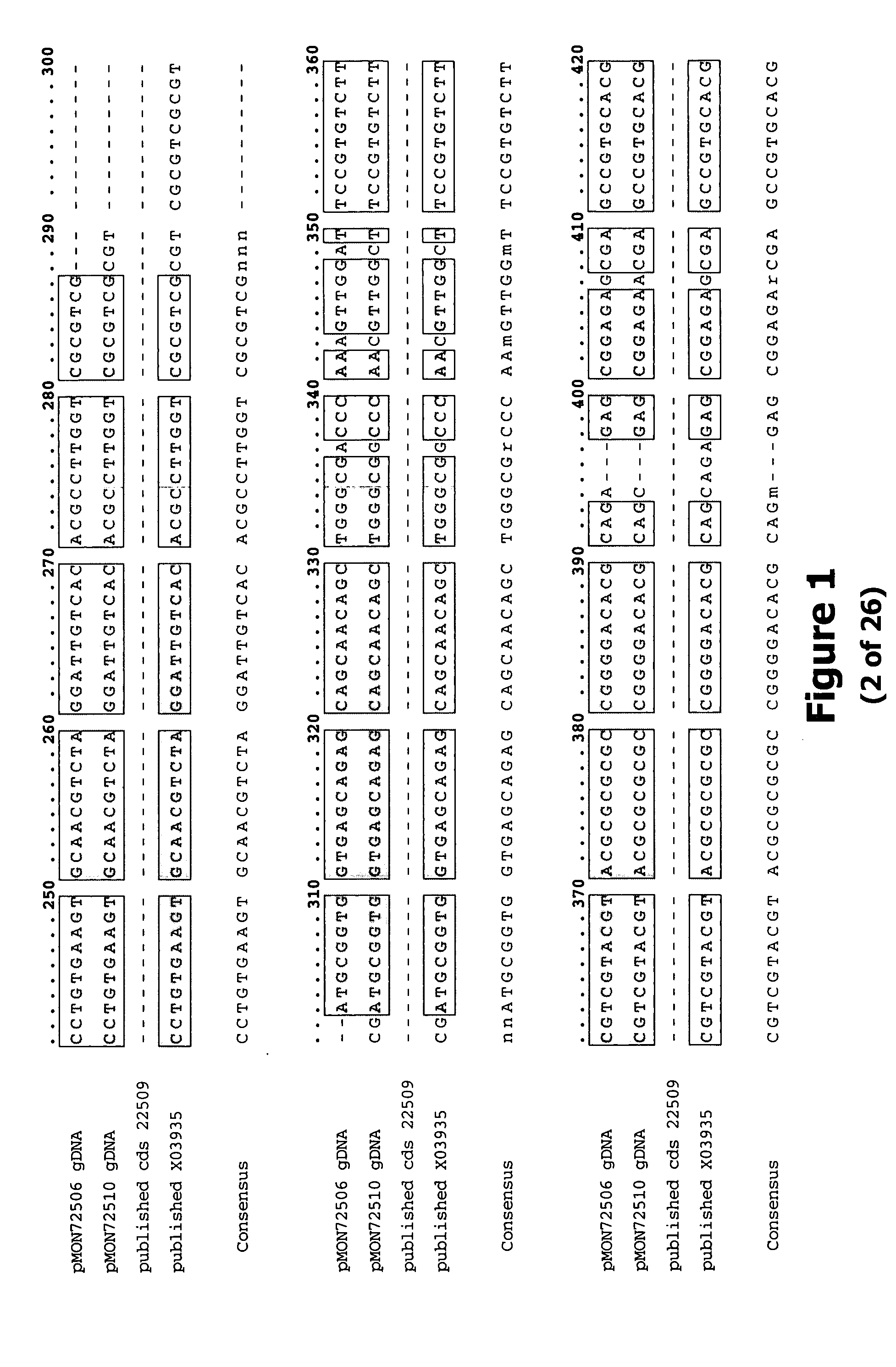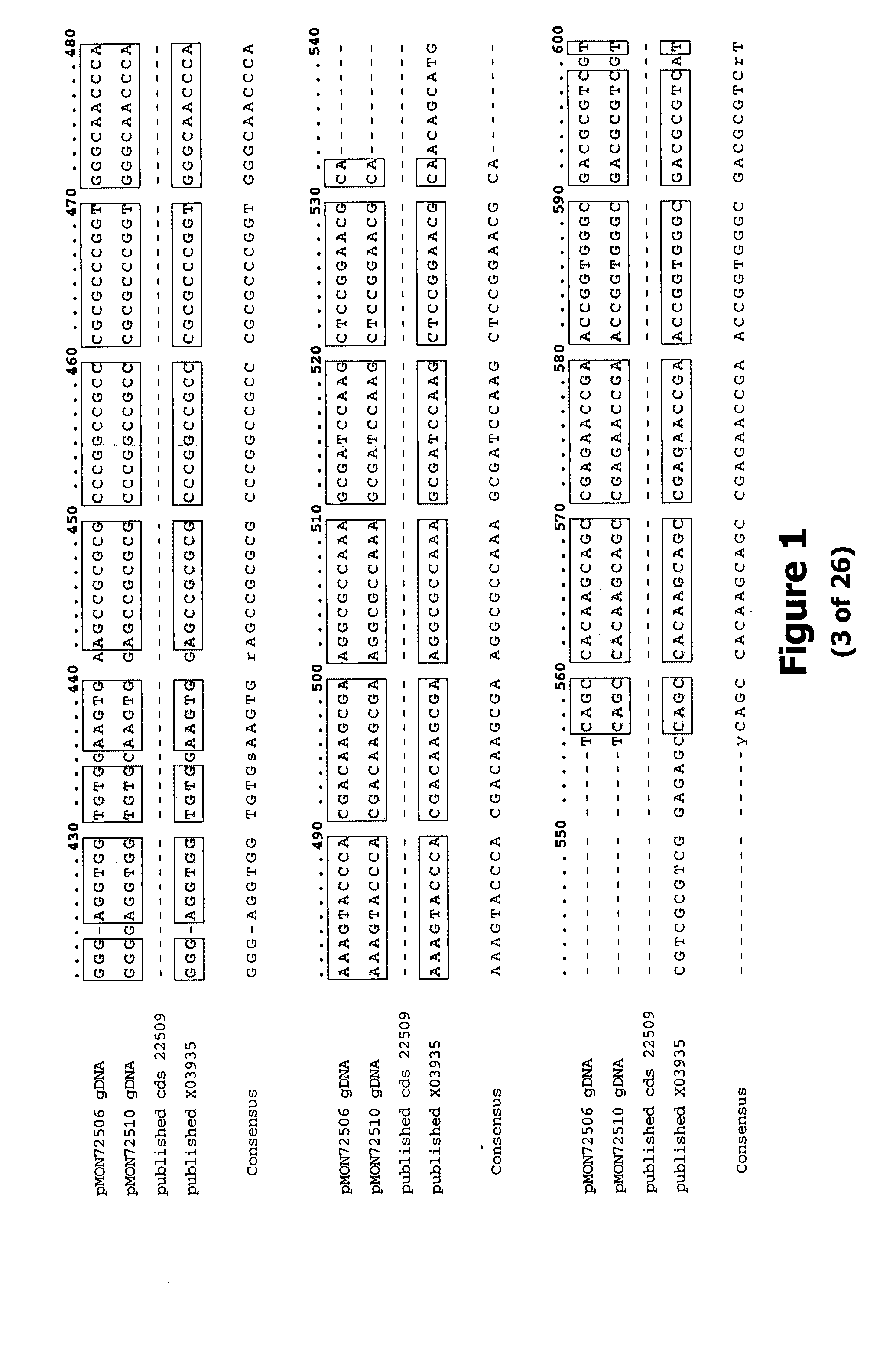Elevation of oil levels in plants
a technology of oil content and plant, applied in the field of nucleic acid chemistry and agricultural biotechnology, can solve the problems of increasing the increasing the oil yield of transgenics, and not showing any evidence of increasing total fatty acid content, so as to increase the oil content, and improve the effect of oil production
- Summary
- Abstract
- Description
- Claims
- Application Information
AI Technical Summary
Benefits of technology
Problems solved by technology
Method used
Image
Examples
example 1
[0139] This example describes the isolation and sequencing of the HOI001 GBSS gene from corn line HOI001. HOI001 is an inbred plant derived from MGSC 915E (Maize Genetic Stock Center, Urbana, Ill.), and is more fully described in U.S. Patent Publication Nos. 20030172416 and 20030154524, both of which are incorporated herein by reference.
[0140] Genomic DNA was extracted from corn germ tissue from HOI001, 22 days after pollination, using the following procedure. Between 50-100 mg dissected germ tissue was placed in a Bio101 Multimix tube (Qiagen, Carlsbad, Calif., Cat. No. 657-601) with extraction buffer and glass beads. The extraction buffer consisted of 100 mM Tris-HCl (pH 8.0), 50 mM EDTA, 100 mM NaCl, 5 mM DTT, and 1% SDS. The tissue was then disrupted using the Bio 101 FASTPREP® machine (Qiagen) with 3 pulses of 20 seconds each. Following a 15 minute incubation at 65° C., 330 μl of 5M potassium acetate was added to each tube. The tubes were then incubated at 0° C. for 20 minutes...
example 2
[0207] This example sets forth the construction of plant transformation vectors containing the sequences of the HOI001 GBSS and the GBSS from inbred line LH59, [SEQ ID NOs: 1 and 7, respectively].
[0208] The HOI001 GBSS sequence was cut from the consensus-corrected version of pMON9480-2 using the restriction enzyme EcOR1. The resulting 4.7 kb fragment was purified following the manufacturer's protocol for the Qiagen miniprep kit (Qiagen, Inc., Valencia, Calif.). The ends of the fragment were blunted following manufacturer's protocol in the Stratagene PCR polishing kit (Stratagene, Inc., La Jolla, Calif.). The fragment was then gel purified using the Qiagen Gel Extraction kit (Qiagen), and cloned into pMON68203, a binary vector for plant transformation. The binary vector, pMON68203, contains left and right borders for T-DNA transfer, a CaMV 35S promoter::nptII::nos 3′ UTR plant selectable marker element (described in U.S. Pat. No. 6,255,560), and plant expression cassette sequences w...
example 3
[0210] This example describes the transformation of corn with the HOI001 GBSS and the GBSS from corn line LH59, using the vectors described in Example 2.
[0211] The transformation vectors pMON72506 and pMON72510 were used to transform maize plants using the following procedure.
[0212] Corn plants are grown in a greenhouse under standard practices. Controlled pollinations were made. The ears of the plants are harvested when the resulting hybrid embryos were 1.5 to 2.0 mm in length, usually 10-15 days after pollination. After removing the husks, the kernels on the ears were surface-sterilized by spraying with or soaking in 80% ethanol.
[0213] The Agrobacterium strain ABI, and an Agrobacterium tumefaciens binary vector system were used for the transformations. Plasmids pMON72506 and pMON72510 were transformed into Agrobacterium tumefaciens according to methods well known in the art. Prior to inoculation of corn cells the Agrobacterium cells are grown overnight at room temperature in AB...
PUM
| Property | Measurement | Unit |
|---|---|---|
| Tm | aaaaa | aaaaa |
| temperature | aaaaa | aaaaa |
| temperature | aaaaa | aaaaa |
Abstract
Description
Claims
Application Information
 Login to View More
Login to View More - R&D
- Intellectual Property
- Life Sciences
- Materials
- Tech Scout
- Unparalleled Data Quality
- Higher Quality Content
- 60% Fewer Hallucinations
Browse by: Latest US Patents, China's latest patents, Technical Efficacy Thesaurus, Application Domain, Technology Topic, Popular Technical Reports.
© 2025 PatSnap. All rights reserved.Legal|Privacy policy|Modern Slavery Act Transparency Statement|Sitemap|About US| Contact US: help@patsnap.com



